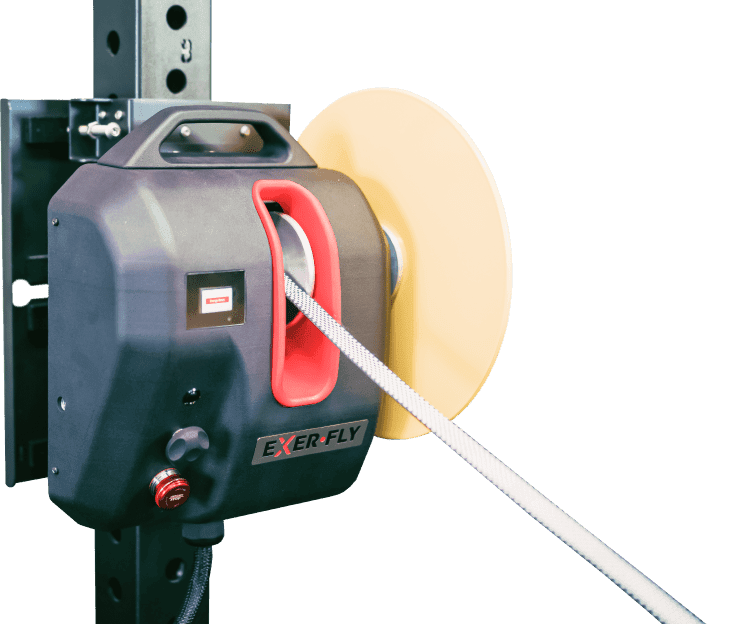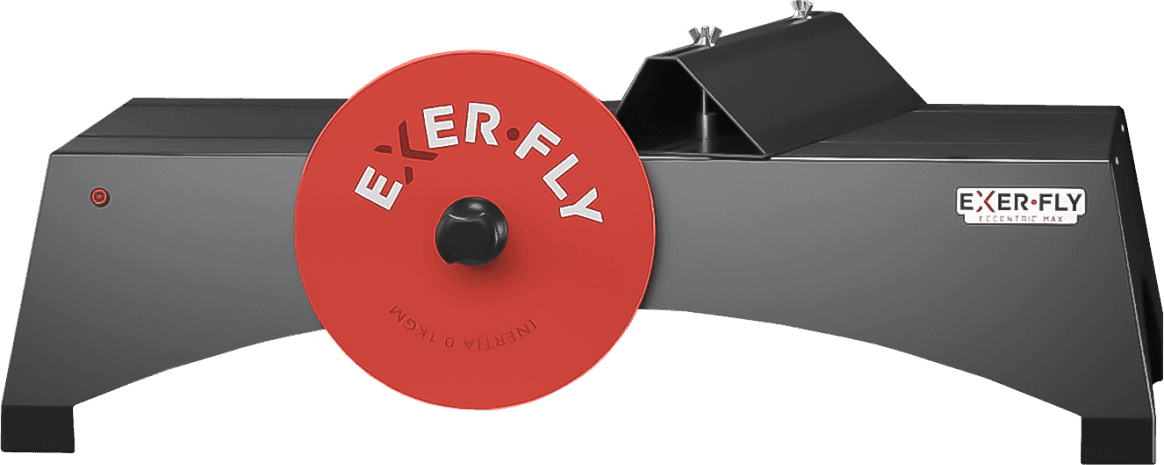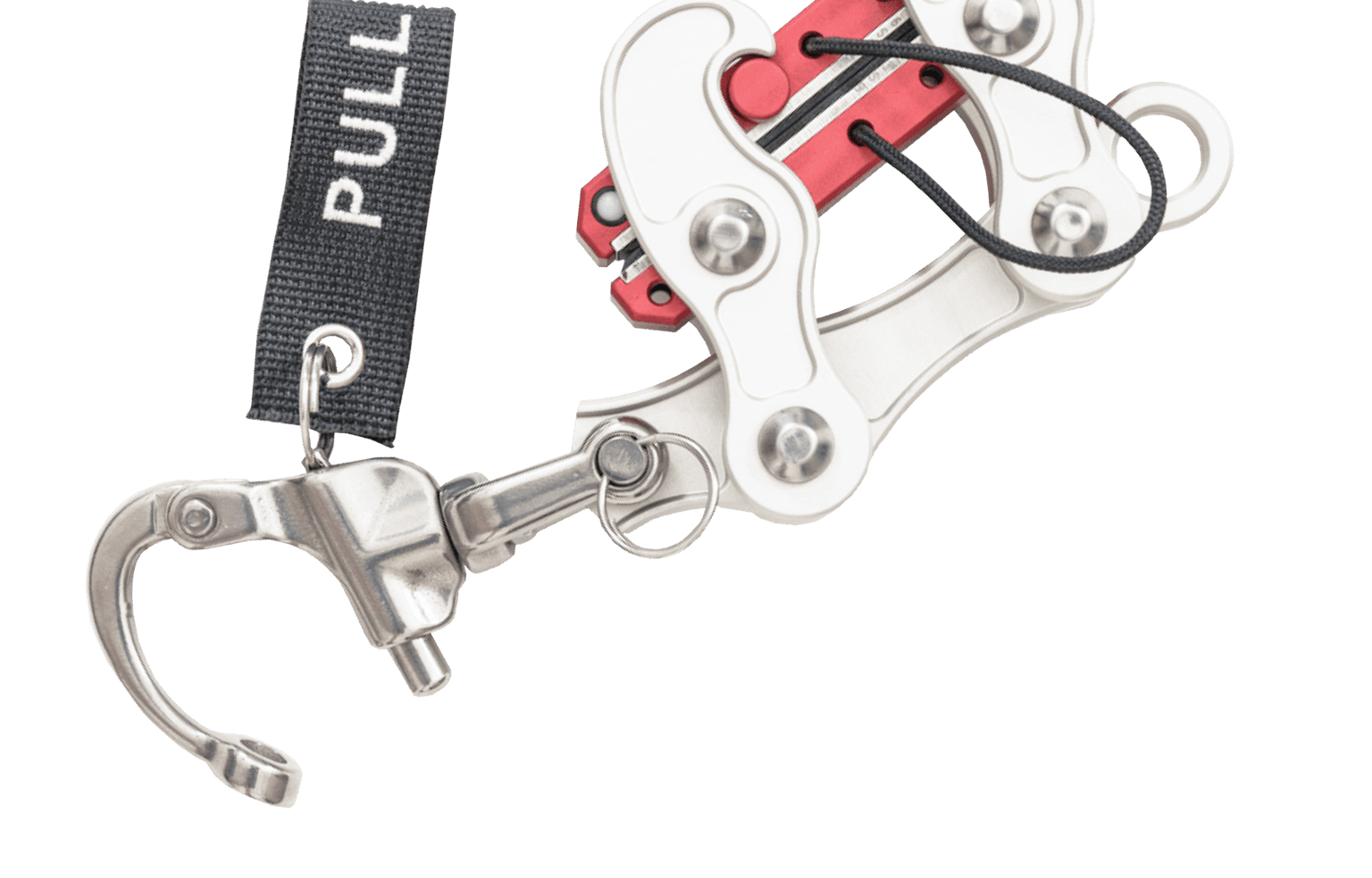
How Cyclists are Excelling with Exerfly
Flywheel training has proven to be quintessential for achieving maximum results in high performance sports such as cycling, which requires an enormous effort of strength and endurance from the athlete. Exerfly equipment provides a comprehensive, targeted training solution for cyclists looking to improve their performance through resistance, strength and conditioning training- which has proven to significantly improve their peak power whilst preventing the occurrence of injury. This article recompiles the benefits of resistance, strength and conditioning training in cycling, and how cyclists can incorporate Exerfly training into their routine.
Benefits of Resistance
Resistance training is the use of resistance to muscular contraction to build strength, anaerobic endurance and size of skeletal muscles. Resistance training is based on the principle that muscles of the body will work to overcome a resistance force when they are required to do so, so when performing resistance training repeatedly and consistently, your muscles become much stronger.
Studies have found that the power produced during a Wingate anaerobic cycle test is largely dependent on the amount of resistance used during the test, and the greater the resistance in the Wingate test, the greater the power produced. From a performance standpoint, male cyclists are capable of producing greater absolute power during a 30-sec sprint using a higher resistance, and female cyclists are also able to produce a greater increase in peak power with the heavier resistance.
Resistance training also has been shown to increase collagenous tissue density (where ligaments get tougher from the loads of strength training), to reduce response time of the golgi tendon organs (the tendons react to sudden loads faster) and to increase bone mineral density (the bone structure is "thicker" and can transmit more force). Resistance training is part of a cyclist's insurance plan against devastating injuries, as a consistent strength training routine and the adaptations it causes can be the difference between getting right back on your bike after a fall and spending 3 months off the bike rehabbing a joint.
Exerfly Resistance
Flywheel training differs from traditional resistance training in that instead of lifting a weight against gravity, the athlete uses force to accelerate and decelerate a Flywheel. Pulling a flat strap, the athlete uses force to spin a flywheel, and then to slow the momentum of the flywheel. When the flywheel spins in one direction, the athletes’ muscles experience a concentric (muscle-shortening) contraction, and when it spins the other way, the athlete experiences an eccentric (muscle-lengthening) extension. This creates a continual push-pull motion, offering constant resistance throughout the entire movement. The harder the athlete works, the harder the resistance.
Featuring industry-leading motorized technology, Exerfly allows athletes to push themselves to new levels, which are almost impossible to achieve otherwise. Now, athletes can add a resistance boost of up to 80% in the eccentric phase of a movement, allowing users to achieve greater eccentric overload for even better results in both the concentric and eccentric phase.
The development of flywheel resistance and turning it into an all-in-one-training solution represents an important step in addressing the feasibility of implementing robust and versatile exercise equipment within small spaces. In contrast to treadmill running or cycle ergometry, exercises on Exerfly equipment encapsulates all the benefits of vigorous whole-body aerobic exercise.
Benefits of strength and conditioning
Road cycling competitions last approximately 10– 500 minutes, therefore endurance performance in road cycling is approximately 80–99% dependent on aerobic metabolism. Like other endurance sports, aerobic endurance performance in road cycling are largely influenced by maximal oxygen consumption (V_O2max), lactate threshold (LT), and cycling economy (the steady-rate oxygen cost of a standard power output measured as L-1min21).
Results have shown that maximal strength training can significantly improve cycling economy, work efficiency in cycling, and time to exhaustion at maximal aerobic power. Maximal strength training improves cycling performance, which is also shown by an improvement in time to exhaustion at maximal aerobic power, and cyclists at both recreational and higher levels are recommended to include maximal strength training as a supplement to their endurance training program. Incorporating maximal strength training 2-3 times a week ensures maximal activation of the neural-muscular system, and it has been shown to give no or minimal weight gain and does not affect maximal oxygen consumption.
The advantage of flywheel training is that the resistance is variable and unlimited, regardless of the direction or speed of motion, allowing excellent eccentric overload to be easily achieved – important because eccentric muscle exercise is particularly effective for building strength. Flywheel training is able to generate high eccentric loadings because of the inertia in the flywheel accumulated during the maximal-effort concentric phase, and the reason why eccentric exercise is so effective is that during an eccentric movement, the applied external resistance can exceed the maximum momentary force produced by the muscle in a concentric muscle contraction – and with lower energy expenditure – resulting in greater work efficiency. Studies have also proved that muscle growth can be further increased when both force generation and muscle and tendon stretching occurs concurrently, which both happen during the eccentric contraction.
Exerfly strength and conditioning
Exerfly is completely results-driven, using scientifically supported methods to generate maximum results. With athletic benefits such as increased muscle hypertrophy, power, and muscle type conversion, Flywheel training also shows significant results in rehabilitation and physiotherapy, strength training, maintenance, and overall athletic performance. A recent study of Flywheel training showed a significant increase in muscle mass among participants, with an 8.6% increase in mass, a 30% increase in force, and a 50% increase in concentric and eccentric power over 4 weeks.
Motorized Technology
Exerfly’s Motorized Technology gives athletes the option to add an additional eccentric overload of up to 80%, based on the force put into the concentric phase. Overloading eccentrically allows users to complete maximal strength training, facilitating muscle hypertrophy and injury prevention. For example, if the user selects a 10% boost, then whatever energy they put into the concentric phase of the movement will be amplified by 10% in the eccentric phase.
Athletes are encouraged to incorporate strength training with an emphasis on eccentric muscle contractions so they can develop specific neural patterns of muscle activation e.g. requiring fewer motor units to generate the same amount of force during a submaximal exercise and enabling the muscle/tendon unit to contract with greater ‘kinetic efficiency’. This improved efficiency allows muscles to maintain a given submaximal workload with reduced oxygen consumption, thus reducing fatigue in athletes during endurance events such as cycling.
Examples of exercises
Below is a list of essential strength training exercises for cyclists, to improve the primary movers ( legs) and help strengthen the muscles that support the body on and off the bike (the core).
- Zercher Squat: https://youtu.be/bhGXQ5-vZHI
- Lunge/Split Squat: https://youtu.be/w6w3Fd0FVNc
- Mountain Climbers: https://youtu.be/PgSb2Z0h3Mw
- Prone Hamstring Curl: https://youtu.be/zXQkeAr6oWs
- Sit Ups: https://youtu.be/EA00xztkPqE
- Seated Calf Raises: https://youtu.be/PJeFiOOKHXk
- Standing Calf Raises: https://youtu.be/3UwpbPs8wl8
- Kickbacks: https://youtu.be/aMRMWwZleug
- Isometric Hold: https://youtu.be/6TYgo9iRNUY
- Hip Thrusts: https://youtu.be/fsFM6PxLAvw
- Hip Swings: https://youtu.be/C6t78sToGGI
Sources
* https://www.betterhealth.vic.gov.au/health/healthyliving/resistance-training-health-benefits*
* https://www.bicycling.com/training/a20036554/10-essential-strength-exercises-for-cyclists/*
https://www.researchgate.net/profile/Greg-Grosicki/publication/323977971_Myocellular_Responses_to_Concurrent_Flywheel_Training_during_70_Days_of_Bed_Rest/links/5b1da667a6fdcca67b690ece/Myocellular-Responses-to-Concurrent-Flywheel-Training-during-70-Days-of-Bed-Rest.pdf https://www.researchgate.net/profile/Arnstein-Sunde/publication/38034737_Maximal_Strength_Training_Improves_Cycling_Economy_in_Competitive_Cyclists/links/5ecf9f5492851c9c5e63b4c2/Maximal-Strength-Training-Improves-Cycling-Economy-in-Competitive-Cyclists.pdf**https://www.sportsperformancebulletin.com/endurance-training/strength-conditioning-and-flexibility/flywheel-training-can-produce-flying-performance/ https://www.bicycling.com/training/a20036554/10-essential-strength-exercises-for-cyclists/






